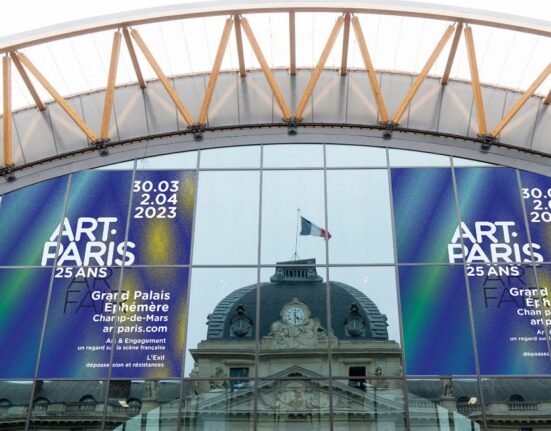- By Katy Prickett
- BBC News, Cambridgeshire
Image source, The Fitzwilliam Museum, Cambridge
William Blake was a deeply religious man who had a fascination with Christian mysticism, which informed his huge body of works
“New light” will be shed on the English Romantic artist and poet William Blake as rarely-shown work goes on display.
The Fitzwilliam Museum exhibition in Cambridge features the largest-ever display of its collection of his paintings, drawings and prints.
The exhibition will be the first to show he was not “an isolated figure”, according to its curators.
It aims to place Blake as part of European-wide networks, using loans from British and German museums.
Image source, The Fitzwilliam, Cambridge
The museum said “rarely-seen” work such as the trial frontispiece of his book Jerusalem will be exhibited
“We are excited to be able to shed new light on Blake by placing his works in dialogue with wider trends and themes in European art of the Romantic period, including transformations of classical tradition, fascination with Christian mysticism, belief in the coming apocalypse, spiritual regeneration and national revival,” said curators David Bindman and Esther Chadwick.
The museum, which is part of Cambridge University, will feature about 180 paintings, drawings and prints, including 90 by Blake.
They include the rarely-seen trial frontispiece of his prophetic book Jerusalem and his large drawing Free Version of the Laocoön.
Image source, The Fitzwilliam Museum, Cambridge
Another image on display is his drawing of the Laocoön – a Trojan priest referenced by the Greek writer Virgil
These are new acquisitions from the Sir Geoffrey Keynes bequest, displayed publicly for the first time since joining the Fitzwilliam’s collection.
Pieces by German Romantic artists, such as Philipp Otto Runge’s The Large Morning and Caspar David Friedrich’s seven sepia drawings The Ages of Man, will help put Blake into his European context.
Image source, Hamburger Kunsthalle
The exhibition aims to put Blake into his European context and includes Philipp Otto Runge’s The Large Morning
Image source, Hamburger Kunsthalle
Runge, above in Self-portrait with Brown Collar, was a Christian mystic who died young, and due to a fire in Munich in 1931 very little of his work survives
Blake (1757-1827) produced a huge body of work during a time of revolution and war in Europe and North America, responding in radical ways.
He was also deeply religious, frequently depicting Christian subjects in his paintings and prints.
The artist had a few loyal patrons and admirers, but for most of his life struggled to earn a living.
Image source, The Fitzwilliam Museum, Cambridge
English artist Samuel Palmer admired William Blake, whose picture The Magic Apple Tree cannot often be displayed due to its fragility
The museum also aims to place Blake within British artistic networks, drawing parallels with the work of his peers, mentors and followers.
These include Henry Fuseli, John Flaxman and Samuel Palmer, whose The Magic Apple Tree is among the exhibits.
The museum said the artwork could not be on long-term display due to its fragility, adding it gets “huge numbers of people wanting to know” when they can see it.
Image source, The Fitzwilliam Museum, Cambridge
William Blake’s most famous work is probably the poem Jerusalem, which was turned into a hymn by Hubert Parry in 1916







